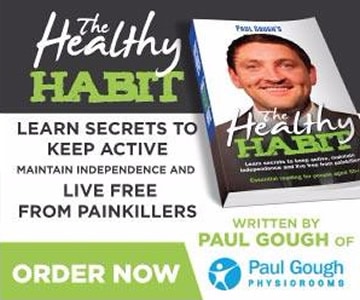Introduction: A Seasonal Shift
As the warm days of summer fade, autumn arrives with its crisp mornings, shorter evenings, and cooler temperatures. For many, this change is welcome – it’s a time of cosy jumpers, colourful walks, and a return to familiar routines. Yet, for those living with back discomfort, the shift into colder months can also bring fresh challenges.
Back pain is one of the most common reasons people adjust their daily routines, and the drop in temperature often makes it feel more noticeable. Whether it’s stiffness when getting out of bed, discomfort while tackling autumn chores, or worries about staying mobile as the days darken, many find this time of year a test for their back health.
The good news? Autumn can also be a season to reset, build habits, and take small steps towards supporting your back. This article explores why colder months can make back pain harder to manage, strategies to help you feel more comfortable, and gentle ways to keep active and enjoy the season.
Why Back Pain Feels Different in Autumn
1. The Cold Factor
Cooler temperatures can affect the body in subtle ways. Muscles may feel tighter, joints stiffer, and it often takes longer to “get going” in the morning. This added stiffness can make daily activities – from tying shoes to lifting shopping – feel more difficult.
2. Reduced Activity
Summer naturally encourages movement, but autumn can bring more time indoors. Shorter daylight hours and chilly weather may reduce outdoor exercise, leading to less mobility overall. The less we move, the easier it is for stiffness to build.
3. Seasonal Tasks
Autumn brings its own set of physical demands: raking leaves, carrying heavier shopping as we prepare for winter, or spending longer in cars on darker days. Each of these can place strain on the back, particularly if posture or pacing isn’t considered.
4. Mood and Motivation
Seasonal changes can affect motivation. Shorter days and less sunlight can leave people feeling sluggish, and when energy dips, the desire to stay active often does too – making back pain more likely to interfere with daily life.
Strategies for Supporting Back Comfort in Colder Months
Keep Warm
Layering clothes helps maintain warmth around muscles and joints, reducing stiffness. Hot water bottles, warm baths, or heated cushions can also provide gentle comfort on colder days.
Stay Hydrated
It’s easy to forget water when the weather cools, but hydration supports joint and muscle function year-round. Keeping a bottle nearby is a simple reminder.
Prioritise Movement
Short, frequent bouts of movement often feel more manageable than long sessions. Walking around the house, stretching during TV breaks, or practising gentle exercises can keep the back mobile.
Posture Awareness
Sofas, chairs, and home workspaces become more appealing as the weather cools, but sitting for long periods can impact the back. Small check-ins – rolling shoulders, sitting tall, or placing a cushion for support – may help ease strain.
Plan Seasonal Tasks
When raking leaves, cleaning gutters, or moving heavy items, pacing is key. Break tasks into smaller sections, swap positions often, and avoid bending from the waist repeatedly.
Gentle Exercises for Autumn Mornings
- Knee-to-Chest Stretch – lying on your back, gently draw one knee towards the chest, then swap sides.
- Seated Spinal Twist – while sitting tall, rotate slowly to one side, then the other.
- Cat-Cow Stretch – on hands and knees, alternate between arching and rounding the back.
- Shoulder Rolls – sitting or standing, roll shoulders forwards and backwards.
- Gentle Walking – even five minutes around the block helps ease stiffness.
These movements don’t need to be intense. The aim is simply to wake up the muscles and joints, preparing the body for the day ahead.
Everyday Habits That May Help
- Warm Up Before Tasks: a few stretches before heading outside can reduce stiffness.
- Stay Consistent: even on darker days, small routines like morning walks can make a difference.
- Mindful Breaks: pause every hour to stretch or adjust posture.
- Supportive Footwear: shoes with good cushioning can help with balance and reduce strain on the spine.
- Balanced Rest: while rest is important, too much sitting can add to stiffness. Alternate between rest and light movement.
Why Autumn Is an Opportunity
Although colder weather can feel like a setback, it’s also a season that invites reflection and routine. Unlike the busy, social pace of summer, autumn often allows quieter time to focus on personal wellbeing. For many, this can be the perfect moment to pay attention to back health, building habits that will carry into winter.
The key is consistency – those small, daily steps that, over time, help the back feel steadier and more supported.
When to Consider Extra Guidance
If back pain persists or interferes with daily life, professional support may be worth exploring. Physiotherapists are trained to assess movement, posture, and lifestyle factors, offering tailored strategies to support comfort and mobility.
These sessions may include:
- Hands-on techniques designed to ease stiffness
- Gentle exercises to improve flexibility and strength
- Practical advice for seasonal tasks and everyday routines
- A supportive space to ask questions and learn more about how the body works
Physiotherapy isn’t about promises or quick fixes – it’s about helping people explore safe, supportive ways to move forward.
Conclusion: Moving into Autumn with Confidence
Back pain can feel more noticeable as the seasons change, but it doesn’t have to limit what autumn has to offer. With a little preparation, regular movement, posture awareness, and simple daily habits, it’s possible to support your back while enjoying the crisp air, colourful walks, and cosy routines this season brings.
Progress isn’t always about dramatic leaps – sometimes, it’s found in the steady, small actions taken each day.
👉 Book a free discovery visit today at Paul Gough Physio Rooms to explore gentle, supportive strategies for your back this autumn – Free Discovery Visit – Paul Gough Physio Rooms


